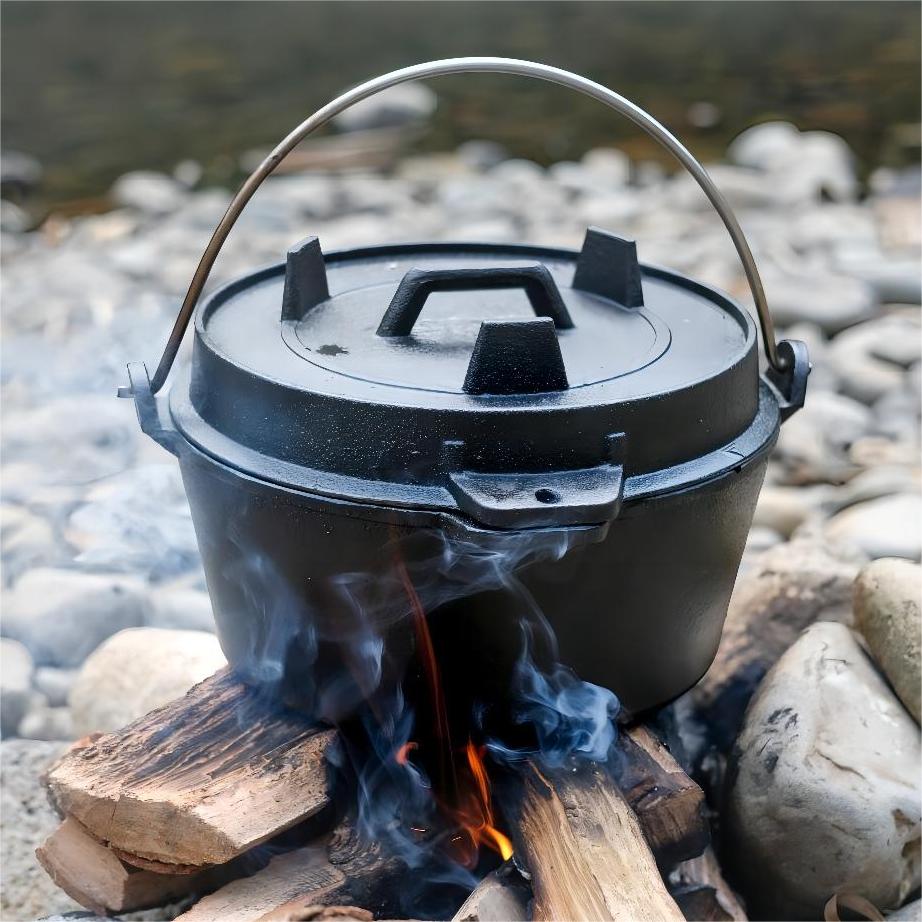
Effective Methods for Cleaning Your Cast Iron Frying Pan
Effective Cleaning Tips for Your Cast Iron Frying Pan
Cast iron frying pans are beloved kitchen staples, prized for their durability and exceptional heat retention. With proper care, these pans can last a lifetime, often becoming family heirlooms. However, maintaining their seasoned surface and ensuring they remain non-stick can be a bit challenging. In this article, we will explore effective cleaning methods to keep your cast iron frying pan in top condition.
Why Cleaning Cast Iron is Different
Unlike stainless steel or non-stick cookware, cast iron requires special care to maintain its seasoning—a layer of polymerized oil that provides a natural non-stick surface and protects the pan from rusting. Using soap or harsh detergents can strip this seasoning, making your cast iron pan less effective and more prone to damage. Therefore, it’s essential to understand the right cleaning techniques to preserve the integrity of your cookware.
Basic Cleaning Steps
1. Let the Pan Cool After cooking, allow the pan to cool slightly but not completely. It’s best to clean it while it’s still warm, as food residue is easier to remove when the pan is warm.
2. Scrape Off Residue Use a silicone spatula or a wooden spoon to scrape off any stuck-on food. For stubborn bits, a non-metal brush or a scrub pad can be employed. Avoid using steel wool or abrasive pads, as they can scratch and damage the seasoning.
3. Rinse with Water Rinse the pan under warm water. You can use a small amount of mild soap if necessary, but it's best to limit soap use to occasional deep cleans. Generally, hot water alone is sufficient for regular cleaning.
4. Maintain the Seasoning If your pan looks dry after cleaning, apply a light coat of vegetable oil or flaxseed oil. Heat the pan on low for a few minutes to help the oil bond to the surface. This step is crucial, as it enhances the seasoning and prevents rust.
cast iron frying pan cleaning

Deep Cleaning Techniques
Occasionally, your cast iron frying pan may require a deeper clean, especially if food has stuck to it or if it has developed rust spots. Here are a few methods for deep cleaning
1. Salt Scrub For stuck-on food, use a coarse salt (like kosher salt) as an abrasive. Sprinkle salt into the pan and scrub with a damp cloth or sponge. The salt acts as a gentle abrasive, helping to lift debris without harming the seasoning.
2. Baking Soda Paste If there are more stubborn deposits, create a paste using baking soda and water. Apply it to the problem areas and scrub gently. Rinse and dry the pan thoroughly.
3. Vinegar and Baking Soda For rust spots, create a mixture of equal parts vinegar and water, soak the pan for a few minutes, then sprinkle baking soda on the rust spots. Scrub gently before rinsing thoroughly and drying.
4. Oven Method In the case of severe rust or residue, some may opt for the oven cleaning method. Wrap the pan in aluminum foil to catch drips and place it upside down in the self-cleaning oven. The high heat will strip the pan back to the raw iron. After the cycle, re-season your pan to restore its protective layer.
Final Thoughts
Cleaning your cast iron frying pan doesn’t have to be a daunting task. With the right techniques, you can ensure a long-lasting, functional piece of cookware. Remember to avoid harsh detergents, treat your pan with care, and regularly maintain its seasoning. By doing so, your cast iron frying pan will not only serve you well for many years but may also develop a natural patina that enhances its cooking abilities over time. Happy cooking!
-
Season Cast Iron Perfectly with GPT-4 Turbo TipsNewsAug.01,2025
-
High Quality Cast Iron Cookware - Baixiang County Zhongda MachineryNewsAug.01,2025
-
Premium Cast Iron Pan: Durable & Perfect HeatNewsAug.01,2025
-
High Quality Kitchen Durable Black Round Cast Iron Cookware Pancake Crepe Pan-Baixiang County Zhongda Machinery Manufacturing Co., Ltd.NewsAug.01,2025
-
Cast Iron Cookware - Baixiang County Zhongda Machinery | Nonstick, Heat ResistanceNewsAug.01,2025
-
High Quality Kitchen Durable Black Round Cast Iron Cookware - Baixiang County Zhongda Machinery | Non-Stick, Heat Retention, DurableNewsJul.31,2025


